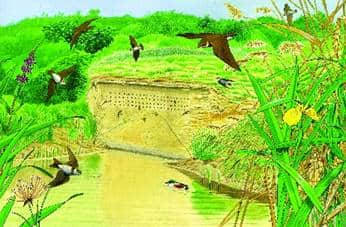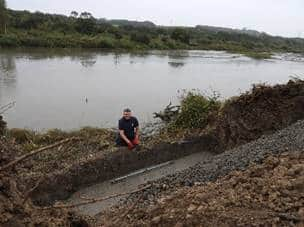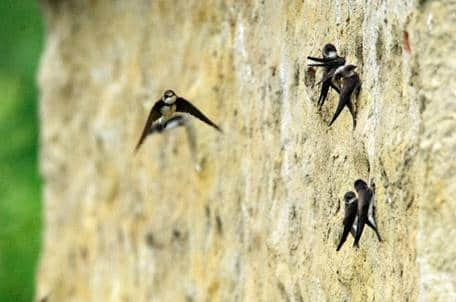Washington Wetland Centre creates artificial sandbank to attract first ever nesting pairs of sand martins
and live on Freeview channel 276
Washington Wetland Centre has commenced work on an artificial sand bank which wardens hope will attract up to 100 nesting pairs of sand martins next spring.
Sand martins winter in parts of Africa and migrate north back to our shores in late March and April. They are a welcome sight and are seen as heralding the arrival of spring.


Advertisement
Hide AdAdvertisement
Hide AdThe species have been seen feeding over the centre's Wader Lake where they have been observed trying to dig nesting chambers into the lakeside bank.
Due to the consistency of the soil they have had no known success, but the artificial bank will provide 100 nesting tubes that are are a ready made home for pairs to start a family.
It's hoped the new habitat will provide the environment needed for the species to finally settle and breed on site for the first time on record.


Reserve manager John Gowland said: “Sand martins are one of the first spring migrants to arrive on our reserve each breeding season and are a favourite with our visitors and members.
Advertisement
Hide AdAdvertisement
Hide Ad“They can often be seen feeding on flying insects while on the wing over Wader Lake, with their continuous twittering song filling the air.
“A small number used to nest in the banks of the River Wear in the 1970s but unavoidable anti-erosion work removed the sandy deposits that they were using.
“We’ve also previously scraped back the banks of Wader Lake in the hope it would encourage them to nest, but the material wasn’t suitable for them.
“Now, as part of our ongoing development of the lake, we’re opting to build this artificial bank instead and are very hopeful it will mean the start of this beautiful species breeding on site for the first time on record.”


Advertisement
Hide AdAdvertisement
Hide AdWashington’s sister site WWT London Wetland Centre, in Richmond, has seen great success since establishing its own sand martin bank in 2003.
From an initial seven or so pairs attempting to nest in the first season, an incredible 87 chambers were in use just four years later.


John added: “Seeing the success of this kind of build at WWT London has set a great precedent and we’re confident that we can repeat that here in the North East.
“Sand martins are used to their natural nesting sites collapsing, so they easily adapt to settling in new ones.
Advertisement
Hide AdAdvertisement
Hide Ad"As they are colonial nesters, the fact that we’ll be providing space for a large group of them should make the habitat even more inviting.
“We can’t wait for their return this coming spring to watch the action unfold.”
Sand martins are the smallest of the European hirundine family, which includes swallows and house martins.
Comment Guidelines
National World encourages reader discussion on our stories. User feedback, insights and back-and-forth exchanges add a rich layer of context to reporting. Please review our Community Guidelines before commenting.